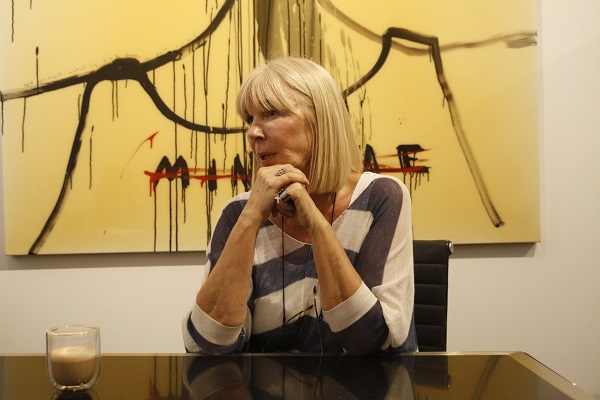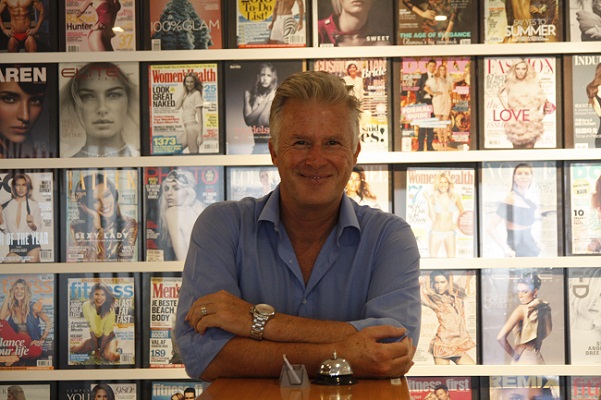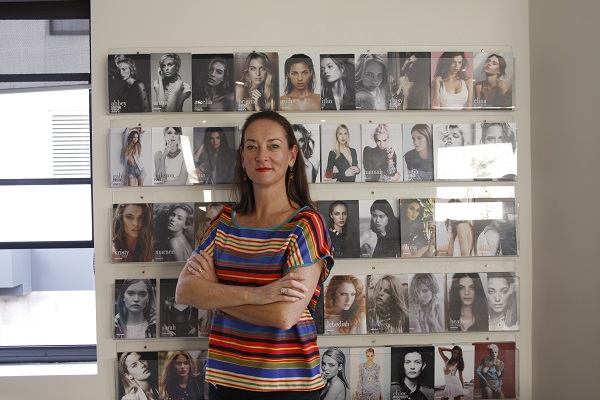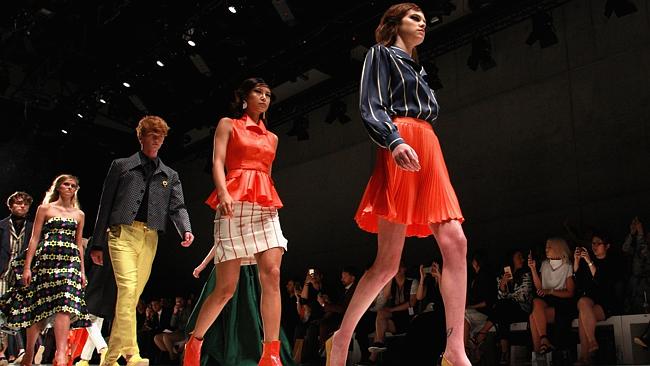The modelling industry is a thriving and essential part of the multi-billion dollar global luxury fashion business, and whilst some might think it’s all about Derek-Zoolander-esque superficiality, the facts are clear. From the collections shown on the runways of the world’s fashion weeks, to the magazine editorials around the world, all the way to the much followed travails of social media, without the girls’ and guys who own that runway – the industry simply would simply not exist. Of course, models are coat-hangers able to display a designer’s vision, but they really are so much more than just a way to see how a dress is supposed to look worn.
Today, the shot of a model carrying a new designer bag can be beamed instantly around the world by social media, making it a bestseller in a day. Who a fashion house selects as the ‘face’ to open their show can have a multi-million dollar impact on a season’s sales and Gisele Bündchen, who recently announced her retirement from the runway has been the biggest earning model for the last few years, making close to US $100 million annually. In 2014, Forbes Magazine listed her as the 89th most powerful woman in the world. Australian model expats sit comfortably on this global rank of success, despite Australia’s isolated position, and Fashion Industry Broadcast sat down front row with some of the biggest agency heads currently to talk about why; including mother commerce, what the future holds for the industry and all things je ne sais quoi.
By Michelle Ives and Kelli Strong
A few years ago, IMG made some serious waves in Sydney when it was announced that it would be opening up shop here, and given that Australia already had a number of seriously well-established local agencies, it wasn’t hard to see why. Distinguished companies like Vivien’s, Chadwick’s and Chic Model Management had been trading both locally and internationally for years, with the former two understood to be the oldest Down Under agencies in the biz, so IMG, without argument, was destined to rock the boat. Many industry insiders at the time postulated as to why an agency who already represented the world’s biggest earners would pick little old Australia to covet, with theories leaning to a need for a new feeder stream as ‘mother agency’ to the power offices in New York and Paris, but one thing that was a burning consensus among all was that there’s just something about Aussie beauties.
It’s no secret that Australia is an exporter: we regularly send tall, attractive people off to the cramped share-houses of NYC, the glittering nightlife of Paris, the colonial bustle of London and the trendy streets of Milan, because to make it big in the fashion industry, you got to get on a plane. So, what is it exactly about them that turn’s so many heads expectantly towards the southern hemisphere? According to Ursula Hufnagl, Director of Woollahra-based Chic Model Management, it’s the Australian attitude that makes Aussie girls and guys so affable and easy to work with. “You know, one of our girls had been working in New York and we got a call one day from the photographer,” she said.
“He told us: ‘I just want to let you know that I was working with this girl, I love her and I want to keep using her. Why? She’s the only model who has ever asked me: may I please use the phone?’ He said just for that alone [he’d book her again]. We are talking someone massive, someone huge!”

There are very few countries around the globe that manage to bring the cutthroat modelling industry to a level that is not only relatable, but likeable, and when it appears that modelling capitals all over the world are operating in a very standard mechanical pattern, it’s our own little Australia that’s managed to keep the business of business all in the family. When asked how the land down under keeps the big names down to earth, Martin Walsh of trendy Surry Hill’s based Chadwick’s Model Management says that it’s due to a great work ethic. “Our clients overseas love the Aussie attitude. You know, you could be the best looking man, woman or child in the world but if you’re a pain in the ass, it’s not going to take you very far,” he said.
“They can be sexy but they they’re never too spoiled. This places them in a great position to grow and build and be courted by the high-end brands.”

The brands that Walsh is referring of course, despite the strong ethical pillars Australian agencies adhere to, are what really propels the Australian contingent along. The role of the ‘mother agency’ in Australian beauty-commerce is a vital one and is essential for smart business. Mother agencies receive royalties of all future earnings once a model is signed and help to keep the agency afloat locally. For Catherine McGill, General Manager of Double Bay based Vivien’s Models, the role of a mother agency is both finance and as you would expect, la familia. “A mother agency is the agency that discovers a girl, so we’ll discover her in any of our four states,” she told us.

“Theoretically a model will stay with her mother agent forever and we set her up for when the time is right for her to do it on a full-time basis. We typically advance the cost of photo-shoots, composite cards and books so we effectively develop, fund and manage the very start of a model’s life.”
Naturally, the return on investment for this upfront commitment can be huge if the model strikes gold overseas. A star endorsement from a Testino or Meisel on a model’s career can “provide for her greater opportunities” according to McGill, and means that they’ve done their work well. Having the right nurturing prior to letting their ‘children’ fly away from home can have a multi-million dollar impact, particularly if said golden child is selected as the ‘face’ to front a show or campaign. Potential profit is riding on their decision, so unsurprisingly Australian agencies have to be very, very astute. It’s certainly a side of the process that most people wouldn’t consider, so whilst the names Chic, Chadwick’s and Vivien’s might all strike you with notions of prestige, success, luxury and certainly longevity, it’s because they have done their business extremely well.
It’s quite a feat, in fact, especially when it comes to cutthroat commerce, that they’ve managed to position their tenets to take direction from their moral compasses. According to Hufnagl, understanding your priorities as a business owner is imperative to success. “A lot of the businesses on an international scale, and the bigger ones in particular are owned by huge conglomerates – they have to think about the bottom line,” she said.
“Once you start thinking that the bottom line is what’s driving you – you’re in big trouble.”
In this industry, then, it’s safe to say that it’s important to be adaptable, and aside from delighting the world with a down-to-earth attitude, Australians have also mastered the market by evolving with it.

All of our business-savvy agency heads mirrored the sentiment that the industry is more multi-faceted now than it ever has been before. From the ‘70s onwards, it was understood that to be successful, a simple business model (no pun intended) could be followed – now, however, it’s a lot more complicated. In today’s modelocology, not keeping up with demands from new trends in the market can seriously hinder success, and each agency broadcast their own way of staying contemporary, compelling and on-top. Vivien’s has jumped on board with acknowledging the diversification of beauty standards with ‘Curve’, a sub-division for plus-sized models, and stressed how important it was for a business to cater to the demands of the market. “I think you have to adapt and respond to things that the market is asking you for,” she said. “It doesn’t necessarily force us to change our business model, it just gives us another avenue for clients who [want] a particular talent.
“We have to respond to the demands of our clients asking us ‘well, do you represent this kind of person or that kind of person?’”
Chadwick’s referred to the “great team” that they have managing all of their talent, and the differences that they bring to the table.
“We’ve got ex-models on board with us who work across both men and women, an ex-runway model, someone who was an ex-client, a guy who is literally a model almanac… so between the team we cover all areas. The models get a very diverse and complete management situation.”
This makes perfect sense through a business lens. Why limit your own success in any way? Surely the best people to manage models are those that have stood in front of a camera themselves, just like Walsh. In Hufnagl’s opinion, increasing the social media presence of their brand was a natural step, given life to through the creation of Chic Blogger Management. Even though Hufnagl got her modelling start in a digital-free modelling economy, now it’s simply just “good business.” She told us “it’s going through the roof. People keep using sentences like ‘oh, but it’s hard to quantify, and oh, but it’s hard to actually put value on’, but do you know what? I’ll put my hand up because they are flat out, absolutely flat out…
…Online content is the future.”
Not all agencies are on-board with social media, though, and it certainly has its downsides, like the can of worms that was opened on the new-found issue of online bullying of young models – which the past industry has never had exposure to. The influx of catty and vile comments after the digital revolution set in changed the game for almost all agencies and was one negative aspect that they had to learn to understand as a downside to being ‘online’. For Walsh, whilst he certainly embraces the online phenomena, he stressed that it must be approached with careful consideration. “Look at Jess Hart,” he told us about one of his most successful faces. “She’s got a very grounded attitude towards all of this in comparison to other models. A lot of them can be very good self-promoters but someone like Jess likes a certain amount of personal privacy.
“It’s a fine line these days between putting your life out there and keeping some semblance of privacy.”
The modelling world depends on the constantly changing definition of style as it pirouettes and transforms from one era to the next; and fashion fanatics have observed the various stages come and go over the years. Brazilian, Russian and Heroin Chic have all had their time in the limelight, so when asked where Australia currently fares on the timeline of style, the response was somewhat unexpected. “I think that whole multicultural mix is really strong in Australia,” said Hufnagl. “You know it is interesting because when you go into a French agency and you look at a French board, and they’re going to hate me for this, but they all look the same. Beautiful. Don’t get me wrong. But it’s very… you can see it. Same with the Americans.
“You walk in and it’s an American look, whereas in Australia, anything goes… there’s such a mix.”
The multiculturalism that Hufnagl refers to is echoed in the comments of McGill when she refers to her “diversified board” which aims to satisfy the needs of all types of clients. “It might be show clients or television commercial clients, you know, editorial, commercial advertising, anything, and we don’t seek to go down any one particular niche path. We like to be in a position where a client rings up and says ‘hey, the brief is XYZ or ABC’ and we have models who fulfill all of those diversified boards. I don’t even believe that there’s an era.’”
For Walsh, it’s coined as “classic beauty… and we’re coming back to it.”
Supermodel Gisele Bündchen (pictured above) epitomised the noughtied-era of Brazilian chic, but that’s evidently no more in today’s modelling landscape.
Resilience is obviously a communal trait here, with McGill commenting, “I think that we probably bat above our average in terms of the number of models that are represented.” It’s no secret that Australians have this business down pat and although we can’t change the cut-throat game, we have proved to the rest of the world that we can change the way it’s played. Whereas in the past the models have been limited in their perceptive delivery as simply really, really ridiculously good looking coat hangers for the clothing, the future for today’s models is wide open. In fact, Hufnagl told us that when models sit for their initial consultations nowadays, they are asked what their other interests are straightaway – something unheard of in the past.
“If you do want a long career, start looking at your other talents.
“Start looking at whether you can write, if you can design, if you can draw, if you can act.” In our self-proclaimed multicultural era, we are developing multi-faceted individuals as well, and we think that that’s something true blue to be proud of, mates.







